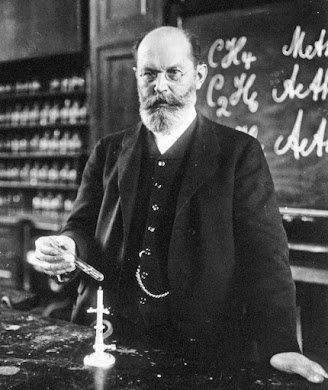Today's KNOWLEDGE Share
Hermann Emil Fischer-Nobel prize 1902
Fischer followed Baeyer to Munich in 1875 as an assistant, becoming a Privatdozent (unpaid lecturer) in 1878, and an assistant professor in 1879. During his time in Munich Fischer continued his research on hydrazines. Together with his cousin Otto, Fisher demonstrated that rosaniline and related dyes were derivatives of triphenylmethane.
Three years later, having now a reputation as an excellent organic chemist, Fischer accepted the position of Professor and Director of the Chemistry Institute at Erlangen in 1882, later accepting a similar position in Würzburg in 1885.
During this time, Fischer began his research on the active constituents of tea, coffee and cocoa (caffeine and theobromine). His research led him to realize that many vegetable substances all belonged to one family group. He gave the name purines to these compounds, which had a base containing nitrogen and a bicyclic structure. He successfully synthesized several purines including caffeine in 1895 and uric acid in 1897. He suggested formulas for the purines uric acid, caffeine, theobromine, xanthine and guanine.
In addition to purines, Fisher also researched the known sugars and he established the stereochemical nature and isometry of these sugars. He synthesized glucose, fructose and mannose in 1890 starting from the substance glycerol.
Fischer became the successor to A. W. von Hofmann, as director of the Chemistry Institute of Berlin in 1892, a position he kept until his death.
Between 1899 and 1908 he studied proteins and enzymes. He established the important “Lock and Key Model” for the visualization of the substrate and enzyme interaction. He formulated that amino acids, which are the building blocks of proteins, are joined together by “peptide bonds”. He also devised a method of combining amino acids to form proteins known as peptides.
Source:https:famousscientists.org
Follow BLOG: http://polymerguru.blogspot.com
#chemistry #purines #enzymes #sugars #peptide #aminocids #proteins #discovery #nobelprize






No comments:
Post a Comment